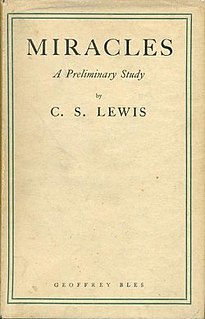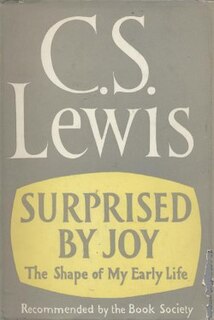 W
WArtists in Crime is a detective novel by Ngaio Marsh; it is the sixth novel to feature Roderick Alleyn, and was first published in 1938. The plot concerns the murder of an artists' model; Alleyn's love interest Agatha Troy is introduced.
 W
WDeath in a White Tie is a detective novel by Ngaio Marsh. It is the seventh novel to feature Roderick Alleyn, and was first published in 1938. The plot concerns the murder of a British lord after a party.
 W
WDeath in Ecstasy is a detective novel by Ngaio Marsh, the fourth to feature her series detective, Chief Inspector Roderick Alleyn of Scotland Yard. It was first published in 1936.
Enter a Murderer is a detective novel by Ngaio Marsh; it is the second novel to feature Roderick Alleyn, and was first published in 1935. The novel is the first of the theatrical novels for which Marsh was to become famous, taking its title from a line of stage direction in Macbeth, and the plot concerns the on-stage murder of an actor who has managed to antagonize nearly every member of the cast and crew. Unfortunately for the murderer, Inspector Alleyn is in the audience.
 W
WThe Four Loves is a 1960 book by C. S. Lewis which explores the nature of love from a Christian and philosophical perspective through thought experiments. The book was based on a set of radio talks from 1958 which had been criticised in the U.S. at the time for their frankness about sex.
 W
WFour Prophets: Amos, Hosea, First Isaiah and Micah: A Modern Translation from the Hebrew by J. B. Phillips is a modern translation from Hebrew sources of the books of Amos, Hosea, First Isaiah and Micah by scholar J. B. Phillips. The book was published in 1963 Macmillan in the US and Geoffrey Bles in the UK. Phillips also published The New Testament in Modern English. The remainder of the Old Testament was never completed by him.
 W
WThe Great Divorce is a novel by the British author C. S. Lewis, published in 1945, and based on a theological dream vision of his in which he reflects on the Christian conceptions of Heaven and Hell.
 W
WThe Horse and His Boy is a novel for children by C. S. Lewis, published by Geoffrey Bles in 1954. Of the seven novels that comprise The Chronicles of Narnia (1950–1956), The Horse and His Boy was the fifth to be published. The novel is set in the period covered by the last chapter of The Lion, the Witch, and the Wardrobe during the reign of the four Pevensie children as Kings and Queens of Narnia. Though three of the Pevensies appear as minor characters in The Horse and His Boy, the main characters are two children and two talking horses who escape from Calormen and travel north into Narnia. On their journey, they learn of the Prince of Calormen's plan to attack Archenland, and warn the King of Archenland of the impending strike.
 W
WLetters to Malcolm: Chiefly on Prayer is a book by C. S. Lewis posthumously published in 1964. The book takes the form of a series of letters to a fictional friend, "Malcolm", in which Lewis meditates on prayer as an intimate dialogue between man and God. Beginning with a discussion of "corporate prayer" and the liturgical service, Lewis goes on to consider practical and metaphysical aspects of private prayer, such as when to pray and where, ready-made prayer, petitionary prayer, prayer as worship, penitential prayer, and prayer for the dead. The concluding letter discusses "liberal" Christians, the soul and resurrection.
 W
WThe Lion, the Witch and the Wardrobe is a fantasy novel for children by C. S. Lewis, published by Geoffrey Bles in 1950. It is the first published and best known of seven novels in The Chronicles of Narnia (1950–1956). Among all the author's books, it is also the most widely held in libraries. Although it was originally the first of The Chronicles of Narnia, it is volume two in recent editions that are sequenced by the stories' chronology. Like the other Chronicles, it was illustrated by Pauline Baynes, and her work has been retained in many later editions.
 W
WA Man Lay Dead is a detective novel by Ngaio Marsh; it is the first novel to feature Roderick Alleyn, and was first published in 1934. The plot concerns a murder committed during a detective game of murder at a weekend party in a country house. Although there is a side-plot focused on Russians, ancient weapons, and secret societies, the murder itself concerns a small group of guests at Sir Hubert Handesley's estate. The guests include Sir Hubert's niece, Charles Rankin, Nigel Bathgate, Rosamund Grant, and Mr and Mrs Arthur Wilde. Also in attendance are an art expert and a Russian butler. Unlike later novels, this novel is more focused on Nigel Bathgate and less so on Alleyn.
 W
WMere Christianity is a 1952 theological book by C. S. Lewis, adapted from a series of BBC radio talks made between 1941 and 1944, while Lewis was at Oxford during the Second World War. Considered a classic of Christian apologetics, the transcripts of the broadcasts originally appeared in print as three separate pamphlets: The Case for Christianity (1942), Christian Behaviour (1943), and Beyond Personality (1944). Lewis was invited to give the talks by James Welch, the BBC Director of Religious Broadcasting, who had read his 1940 book, The Problem of Pain.
 W
WMiracles is a book written by C. S. Lewis, originally published in 1947 and revised in 1960. Lewis argues that before one can learn from the study of history whether or not any miracles have ever occurred, one must first settle the philosophical question of whether it is logically possible that miracles can occur in principle. He accuses modern historians and scientific thinkers, particularly secular biblical scholars, of begging the question against miracles, insisting that modern disbelief in miracles is a cultural bias thrust upon the historical record and is not derivable from it.
The Nursing Home Murder (1935) is a work of detective fiction by New Zealand author Ngaio Marsh.
 W
WThe Road of Dreams is a book of poetry by crime writer Agatha Christie. It was published at her own expense by Geoffrey Bles in January 1925 priced at five shillings (5/-). Only one edition of the 112-page volume was ever published and this was undated.
 W
WThe Screwtape Letters is a Christian apologetic novel by C. S. Lewis and dedicated to J.R.R. Tolkien. It is written in a satirical, epistolary style and while it is fictional in format, the plot and characters are used to address Christian theological issues, primarily those to do with temptation and resistance to it.
 W
WThe Silver Chair is a children's fantasy novel by C. S. Lewis, published by Geoffrey Bles in 1953. It was the fourth published of seven novels in The Chronicles of Narnia (1950–1956); it is volume six in recent editions, which are sequenced according to Narnian history. Like the others, it was illustrated by Pauline Baynes and her work has been retained in many later editions.
 W
WSurprised by Joy: The Shape of My Early Life is a partial autobiography published by C. S. Lewis in 1955. The work describes Lewis’s life from very early childhood until his conversion to Christianity in 1931, but does not go beyond that date.
 W
WTill We Have Faces: A Myth Retold is a 1956 novel by C. S. Lewis. It is a retelling of Cupid and Psyche, based on its telling in a chapter of The Golden Ass of Apuleius. This story had haunted Lewis all his life, because he realized that some of the main characters' actions were illogical. As a consequence, his retelling of the story is characterized by a highly developed character, the narrator, with the reader being drawn into her reasoning and her emotions. This was his last novel, and he considered it his most mature, written in conjunction with his wife, Joy Davidman.
 W
WVintage Murder is a detective novel by Ngaio Marsh; it is the fifth novel to feature Roderick Alleyn, and was first published in 1937. Based in New Zealand, the plot centres on a travelling theatrical troupe and prominently features Doctor Rangi Te Pokiha a Māori, and a "tiki" (hei-tiki) a Māori fertility pendant.